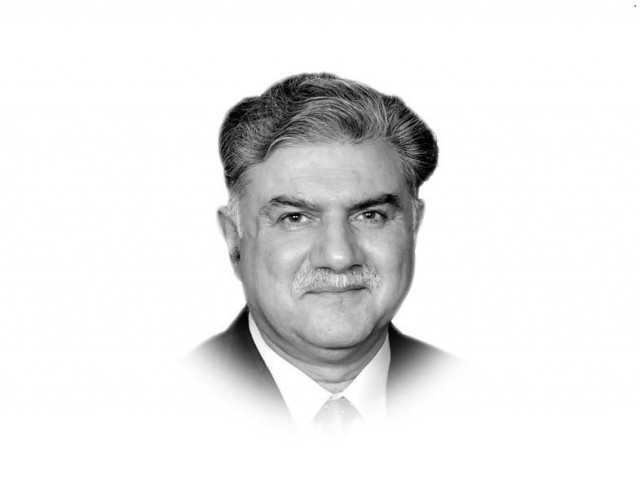Indian media and the tragedy of truth
False news pressures lead decision-makers to populous and mostly wrong decisions with consequences

Last week I wrote on the need for decency in the Indian media discourse in the aftermath of leaked WhatsApp chat by anchor Arnab Goswami related to the 2019 Indo-Pakistan escalation. Researching for the article led me to the labyrinth of fake Indian media machine that churns out anti-Pakistan/China material over print and electronic media including social media platforms. This article focuses on the possible detail of this house of lies.
International organisations have reported extensively about the prevalence in India of false news, shallow and deep fakes, and the government control and manipulation of media. There were over 20 deaths in India during 2018, consequent to misinformation circulated on social media. A country as diverse as India which is a religious, ethnic and communal tinderbox, and where people tend to believe anything sent to them over social media, fake/manipulated news can have dangerous implications.
False news generates pressures and pressures lead decision-makers to populous and mostly wrong decisions with consequences. The scale of the problem can be gauged from the fact that internet penetration in India has increased from 137 million in 2012 to over 600 million in 2019. And India is the biggest market for WhatsApp with over 230 million users.
For multinationals like Facebook, vetting information in all 22 scheduled languages of India is next to impossible. It only vets information in 10 such languages. Important languages like Sindhi, Odia and Kannada remain un-vetted. Although as of May 2019, Facebook in India has removed millions of accounts.
Researchers for Brussels-based EU DisinfoLab, in a 2019 study reported at least 265 fake local news websites, in more than 65 countries, working to sway public perceptions against Pakistan (and China). These sites are managed by Indian influence networks and target international institutions and elected representatives of foreign governments. By 2020, these fake news websites — like OpIndia and Postcard News, had proliferated to 750 across 116 countries. The network included many dubious think tanks and NGOs and had continued for some 15 years.
A BBC report (titled “Indian Chronicles”) has traced many of these fake news websites to an Indian company, Srivastava Group (SG), lobbying for anti-Pakistan efforts in Europe. Its modus operandi consisted of copying syndicated news content from other media outlets, planting opinion pieces and stories critical of Pakistan mainly through NGOs linked to their network. The goal remained influencing organisations like Geneva-based UN Human Rights Council (UNHRC) and European Parliament to discredit Pakistan. The SG website would falsely attribute their op-eds to authors like European lawmakers and fake journalists, with content mostly plagiarised from other sources.
The SG operated through a three-pronged strategy; influencing the UN through fake NGOs; swaying members of EU Parliament using fake think tanks; and manipulating Indian public through the EU Chronicle (a fake news site) and Asian News International or ANI. In a clever orchestration aimed at the UN agencies; think tanks and NGOs were used for lobbying and protesting in Geneva, and for speaking on the UNHRC floor at the behest of accredited organisations. For EU organisations, the focus was on members of the EU Parliament in Brussels, who were taken on sponsored international trips and solicited/duped to write op-eds for fake outlets like EU Chronicle, which would then be circulated through ANI etc.
Investigators were finding direct linkages between the SG and some 10 UN-accredited NGOs and several others, used to promote Indian interests and criticise Pakistan internationally. “In Geneva, these think tanks and NGOs are in charge of lobbying, of organising demonstrations, speaking during press conferences and UN side-events, and they were often given the floor at the UN on behalf of the accredited organisations,” the report says. NGOs/organisations with no apparent link with Pakistan or India (as per their stated objectives) were used to target Pakistan at the UNHRC.
Another fake news website, EP Today, would resurrect fake personas of dead human rights activists and journalists; impersonate regular media agencies like The Economist, EU Observer and Voice of America using Times of Geneva, and New Delhi Times to disseminate anti-Pakistan/China content. It would also use the European Parliament’s letterheads, listing fake phone numbers and addresses, create fake book-publishing companies and public personalities. This was alongside enlisting numerous fake NGOs, informal groups, think tanks, and religious/imam organisations. It would conduct cybersquatting (bulk registration of well-known company/brand names as internet domains for reselling at profit) on Pakistani domains. Most of these sites used social media such as Twitter and would resurrect with different names, if closed by the European regulators.
The main target of the fake content, besides European public and leaders was mainstream Indian news outlets (for example ANI and Yahoo News India). Articles from the fake European outlet, EU Chronicle, were used as source material by ANI to create its own content. As per the report, ANI reporting was then re-circulated on other Indian media and on more than 500 fake websites across 95 countries.
India-sponsored and facilitated mis/disinformation about the Kashmir situation seems widely prevalent, especially on Twitter. After the revocation of Article 370, The New York Times reported that while officials in New Delhi were depicting normalcy in the region, the situation on ground was far tense. The Indian Supreme Court consequently asked the federal government to make “every endeavour to restore the normalcy as early as possible.” An app, NaMo, dedicated to PM Modi, was also reported to be promoting and disseminating fake news. The BJP/RSS used the fake news to full effect during the 2019 elections and through a full-scale media war with Pakistan.
The cited situation calls for deep scrutiny and action by the world to hold India to account for its persistent efforts to malign Pakistan and China. If a similar operation was run by China or Russia; understandable international outrage would have led to public inquiries and perhaps sanctions. The new US administration, under its moralist credentials, needs to censor India. And the UN needs to institute/augment relevant legal oversight framework.
As for the Indian public, the situation vis-à-vis Pakistan and/or China is not what they are led to believe. There is a lot of perpetrated falsehood around truth, under the thin veneer of state-aided media onslaught, where you are also the target. Falsehood would destroy whatever little civility is left, unless you stand up, speak and act. Time is on notice.
Published in The Express Tribune, January 28th, 2021.
Like Opinion & Editorial on Facebook, follow @ETOpEd on Twitter to receive all updates on all our daily pieces.


















COMMENTS
Comments are moderated and generally will be posted if they are on-topic and not abusive.
For more information, please see our Comments FAQ